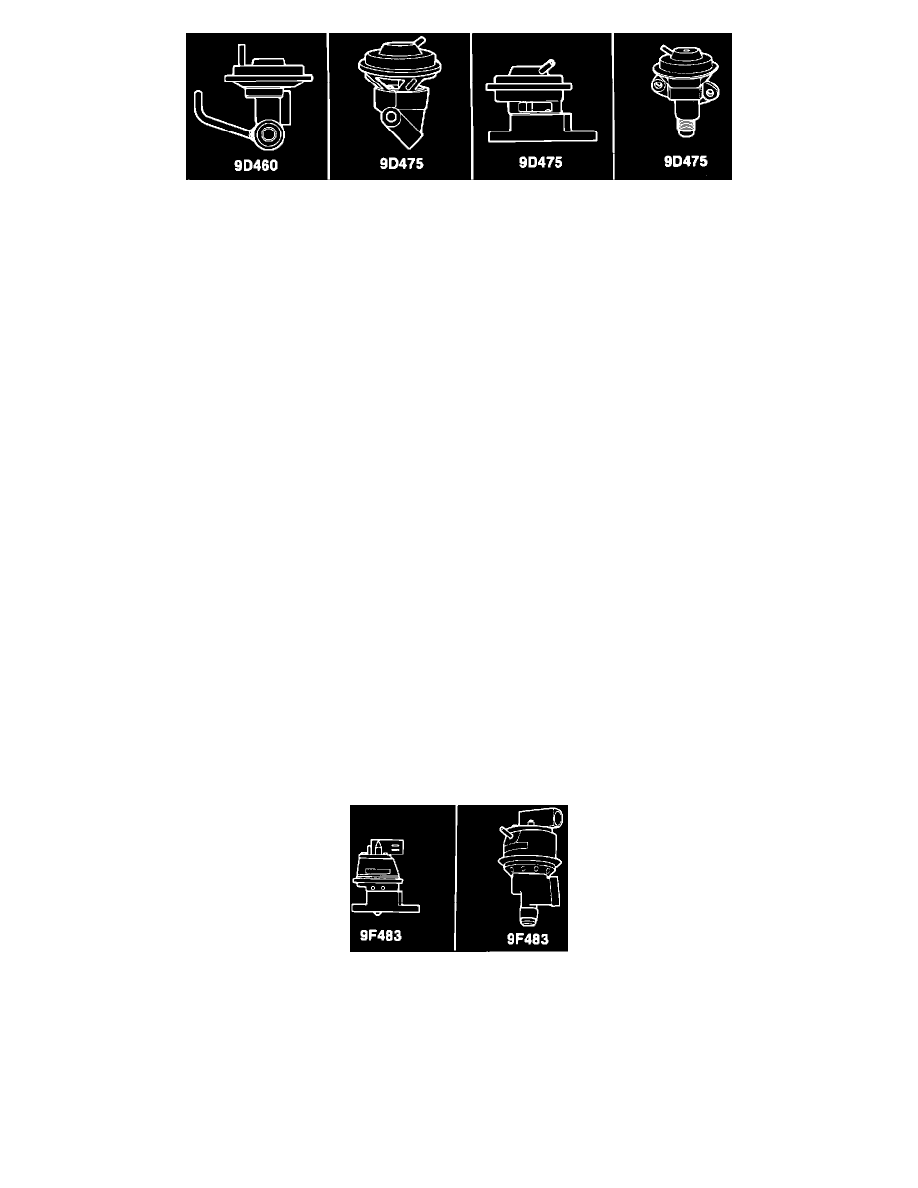Escort L4-98 1.6L SOHC VIN 5 FI (1985)

PORTED EGR VALVE
1.
Make certain that all vacuum hoses are correctly routed and securely attached. Replace cracked, crimped or broken hoses.
2.
Make certain there is no vacuum to the EGR valve at idle with the engine at normal operating temperature.
3.
Install a tachometer.
4.
Disconnect the Idle Air Bypass Valve (9F715) electrical connector (EFI engines only).
5.
Remove the vacuum supply hose from the EGR valve nipple. Plug the hose.
6.
Start engine, idle with transmission in NEUTRAL, and observe the engine idle speed. If necessary, adjust idle speed to the emission decal
specification.
7.
Slowly apply 5-10 inches of mercury vacuum to the EGR valve vacuum nipple using a hand vacuum pump.
8.
When vacuum is applied to the EGR valve and any of the following occur, replace the valve:
^
Engine does not stall.
^
Idle speed does not drop more than 100 rpm.
^
Idle speed does not return to normal (+/- 25 rpm) after the vacuum is removed.
9.
Reconnect the idle air bypass valve electrical connector.
10.
Unplug and reconnect the EGR vacuum supply hose.
11.
The EGR system is OK, refer to the Diagnostic Routines in Section 2.
1986
6-12
Exhaust Gas Recirculation (EGR) Systems
Functional Diagnosis
ELECTRONIC VALVE
1.
Make certain that all vacuum hoses are correctly routed and securely attached. Replace cracked, crimped or broken hoses.
2.
Make certain there is no vacuum to the EGR valve at idle with the engine at normal operating temperature.
3.
Install a tachometer.
4.
Disconnect the Idle Air Bypass Valve (9F715) electrical connector (EFI engines only).
